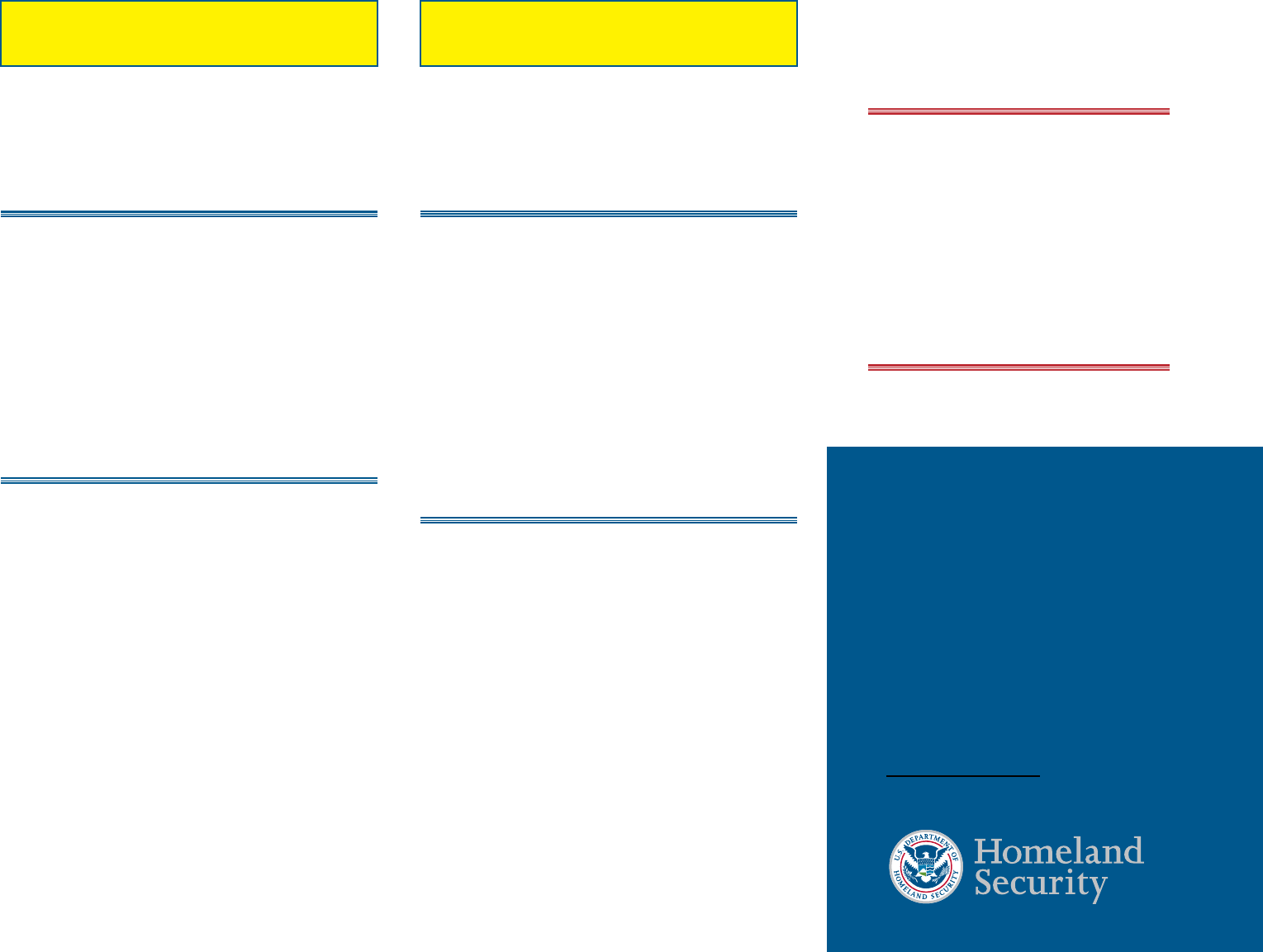
General. The vehicle exception provides that, if
a law enforcement ofcer has probable cause to
believe that a readily mobile vehicle has evidence or
contraband located in it, a search of that vehicle may
be conducted without rst obtaining a warrant.
Requirements. There are two requirements for a
valid search under the vehicle exception: (1) there
must be probable cause to believe that evidence
of a crime or contraband is located in the vehicle
to be searched; and (2) the vehicle must be “readily
mobile.” The vehicle need not be moving, but
must be capable of ready movement, at the time
it is encountered. A search conducted pursuant
to the vehicle exception may be conducted at the
scene or after the vehicle has been impounded.
Scope. If probable cause justies the search of
a lawfully stopped vehicle, it justies the search
of every part of the vehicle and its contents (to
include locked or unlocked containers) that may
conceal the object of the search. Additionally,
if a law enforcement ofcer has probable cause
to believe a specic container placed inside a
vehicle has evidence of a crime or contraband
inside, the vehicle may be stopped and searched
as is necessary to retrieve that container. Once
the container is retrieved, it may be searched
without a warrant under the vehicle exception.
This situation would not, however, support a
general search of the entire vehicle. To search
the remainder of the vehicle, a law enforcement
ofcer would need some further justication,
such as consent or a search incident to arrest.
General. A law enforcement ofcer may “frisk”
a suspect if, during a lawful stop, the ofcer
has a reasonable and articulable suspicion that
the suspect might be presently armed and
dangerous. Vehicles may also be frisked in certain
circumstances.
Requirements. There are two requirements for
a lawful “frisk” of a vehicle for weapons: First,
a law enforcement ofcer must have lawfully
stopped the vehicle that is the subject of the frisk.
Like the investigative detention of a person, this
element requires that the ofcer have a reasonable
suspicion, based upon specic and articulable
facts, that criminal activity is afoot and that the
driver or passenger is involved in that criminal
activity. The second requirement is that the
ofcer have a reasonable belief that the driver or
passenger is dangerous and may gain immediate
control of a weapon.
Scope. If reasonable suspicion exists to believe
that the driver or passenger is dangerous and
may gain immediate control of a weapon, a law
enforcement ofcer may “frisk” that person,
as well as the entire passenger compartment
of the vehicle and any unlocked containers in
the passenger compartment. While an ofcer
generally cannot “frisk” a locked container in
a vehicle (such as a locked glove box), some
federal courts, but not all, have started to allow
this practice. A law enforcement ofcer may not
“frisk” areas from which a passenger could not
retrieve a weapon while seated inside the vehicle
(such as a separate trunk compartment). The
accessible rear area of hatchbacks, vans, buses,
and SUVs are considered part of the passenger
compartment.
The
Federal Law
Enforcement
Training Center
Legal Division
Glynco, GA 31524
January 2008
www.etc.gov/legal
VEHICLE EXCEPTION
TERRY FRISK OF A
VEHICLE
Searching
Vehicles
Without
Warrants
G08-217
SH-1056

General. A vehicle that has been lawfully taken
into the custody of law enforcement ofcers may
be inventoried, if done pursuant to a reasonable,
standardized policy. Neither probable cause nor
reasonable suspicion is required. Inventory searches
are permitted to protect the owner’s property,
protect law enforcement ofcers against claims or
disputes over lost or stolen property, and protect law
enforcement ofcers from potential dangers that
may be located in the property.
Requirements. There are three requirements for
an inventory search. First, the vehicle must have
been lawfully impounded.. Second, a standardized
inventory policy must exist. Third, the inventory must
be conducted in accordance with that standardized
inventory policy and otherwise be reasonable.
Scope. The scope of an inventory search is dened
by the standardized inventory policy of the particular
agency involved. As a general rule, inventory searches
may not extend any further than is reasonably
necessary to discover valuables or other items for
safekeeping. The federal courts have upheld inventory
searches of the passenger compartments and trunks
of vehicles. Inventory searches of containers, locked
or unlocked, may also be conducted, so long as the
standardized inventory policy permits. Finally, a valid
inventory search conducted by law enforcement
ofcers according to standard procedure may include
the engine compartment of a vehicle. KNOW
YOUR AGENCY’S POLICY!
General. When a law enforcement ofcer has
made a lawful custodial arrest of an occupant
of a vehicle, the ofcer may, contemporaneous
with that arrest, search the vehicle in which the
occupant was located.
Requirements. There are two requirements
for a search incident to arrest. First, there must
have been a lawful custodial arrest. Second,
the search of the vehicle must be “substantially
contemporaneous” with the arrest. In other
words, the search may not be too remote in time
or place from the arrest.
Scope. During a search incident to arrest of the
occupant of a vehicle, the passenger compartment
of the vehicle may be searched. The courts that
have considered the issue have held that hatchbacks
and the rear part of a station wagon are considered
to be part of the passenger compartment, as is
the entire interior of a van or sport-utility vehicle.
Additionally, any containers found in the passenger
compartment may be searched. While the Supreme
Court has not expressly addressed locked containers,
several federal cases can be interpreted as including
locked containers within the scope of a lawful search
incident to arrest. The trunk of a vehicle, however,
cannot be searched during a search incident to arrest
unless it is reasonably accessible from the passenger
compartment via a fold-down armrest, seat, or other
method. If the person being arrested is not in the
vehicle at the time of the arrest, but was a “recent
occupant” of the vehicle, the vehicle may still be
searched under this exception.
General. Law enforcement ofcers may conduct a
warrantless search of a vehicle if an individual with
actual or apparent authority voluntarily consents to
the search. In such cases, neither probable cause nor
reasonable suspicion is required.
Requirements. There are two requirements for a
consent search to be valid. First, the consent must
be voluntarily given (i.e., not coerced). Second, the
consent must be given by someone with either actual
or apparent authority over the place or thing to be
searched. For example, the owner of a vehicle would
have actual authority to consent to the search.
Scope. The scope of a consent search is dened by
the consent given. An individual may limit the scope
of and revoke any consent given. A law enforcement
ofcer may specically ask for permission to search
any area of a vehicle, including the passenger
compartment, trunk, and any locked or unlocked
containers. If the consent is granted, a valid search of
those areas may ensue. When a suspect gives general
permission for a law enforcement ofcer to “search
the car,” the law enforcement ofcer may search any
unlocked containers located in the vehicle. However,
it is unreasonable to believe that an individual who has
given general consent to search a vehicle is consenting
to any property damage or destruction. When
dealing with a locked container, a law enforcement
ofcer should seek express permission to search
that particular item. If the consent is granted, the
search may then proceed. If another person who is
capable of giving consent objects to a consent search,
however, ofcers may not search under the consent
exception.
CONSENT SEARCHES
INVENTORY SEARCHES
SEARCH INCIDENT TO
ARREST
G08-217
